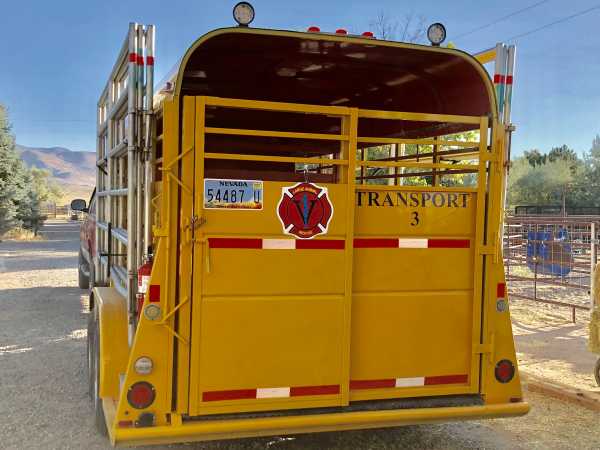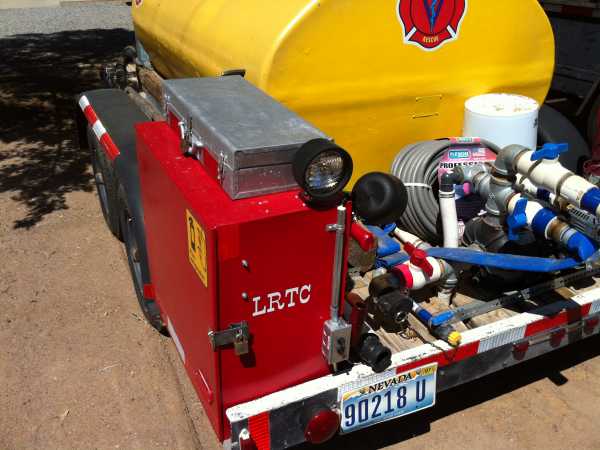Lighting requirements (by law) for larger trailers include:
- Tail / stop / turn signal lamps mounted visible to the rear
- Amber marker lamps on the front sides near the top of the trailer visible to the front and sides.
- Red marker lamps on the rear sides near the top of the trailer visible to the rear and sides.
- Longer trailers are required to have amber marker lamps mid point along each side of the trailer.
- Amber reflectors on the front sides of the trailer.
- Red reflectors on the rear sides of the trailer.
- Red reflectors (separate from the tail lamps) on the rear near each side, visible to the rear.
In addition to required lighting and reflectors, team trailers are equipped as follows.
- Amber marker light on fenders at widest part of trailer visible to the driver. (Useful for determining trailer position when navigating around obstacles in the dark.)
- Red and white DOT C2 type reflective marking tape outlining the entire profile of the trailer.
- LED type tail / stop / turn signal lamps. (LEDs are more reliable and more distinctive.)
- Clear automatic back-up lamp(s.) (The center pin of standard 7-pin trailer plugs is the circuit used to power back-up lamps.)
In addition to interior and loading lights, Trailer 1 also is equipped with side lighting on both sides near the feeding racks. It also has a high capacity marine type battery to power lighting and accessories when not connected to a tow vehicle. The battery is automatically recharged by the tow vehicle or it can be charged from a solar panel.
Rear reflector strip at "eye level."
LED tail / stop / signal lamps.
Backup light on left rear beavertail.

Long reflector strips clearly define the size of the trailer at night.

Automatic back-up lights can double as utility lights.


The training information presented in these information sheets and guides is offered for illustrative and volunteer refresher purposes only. It is not a substitute for actual hands-on training.
|
Press Back to return to the page which brought you here
|





